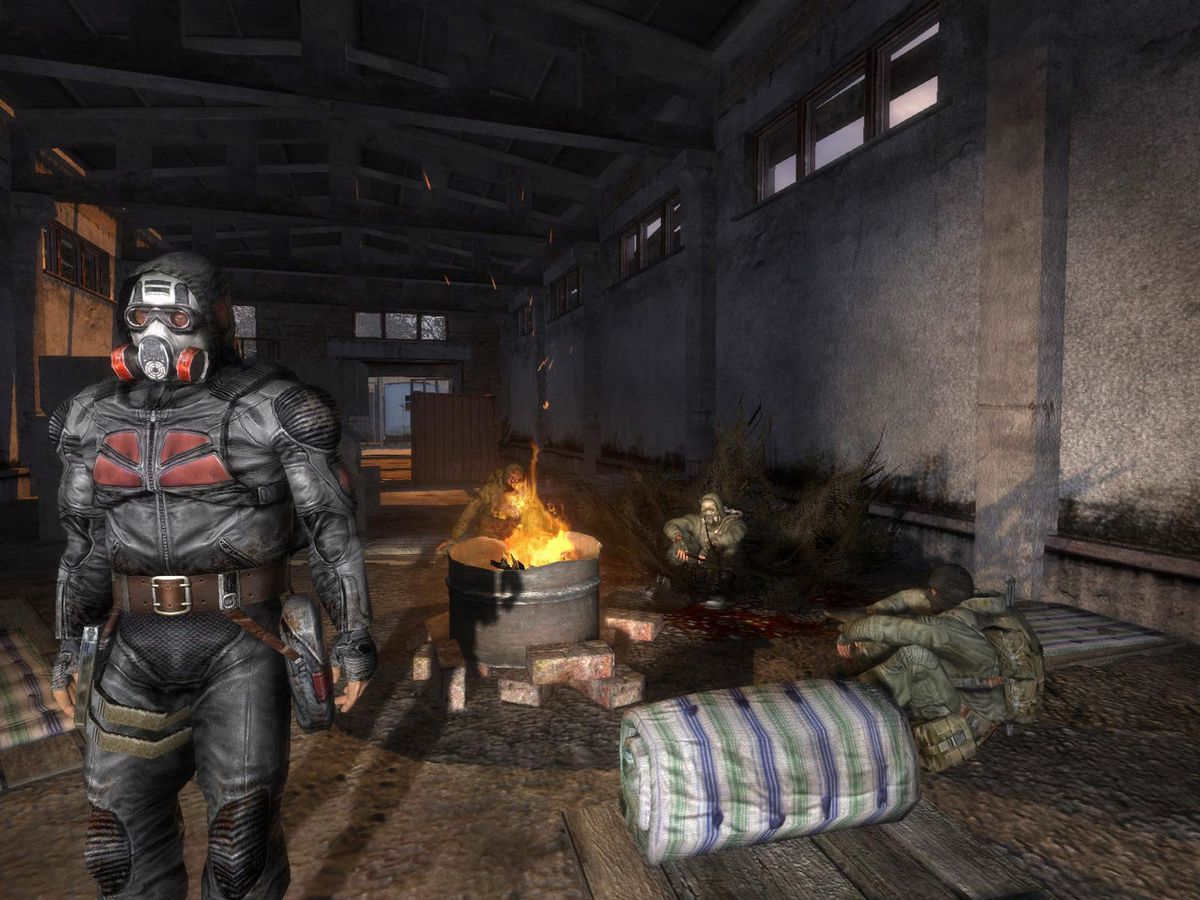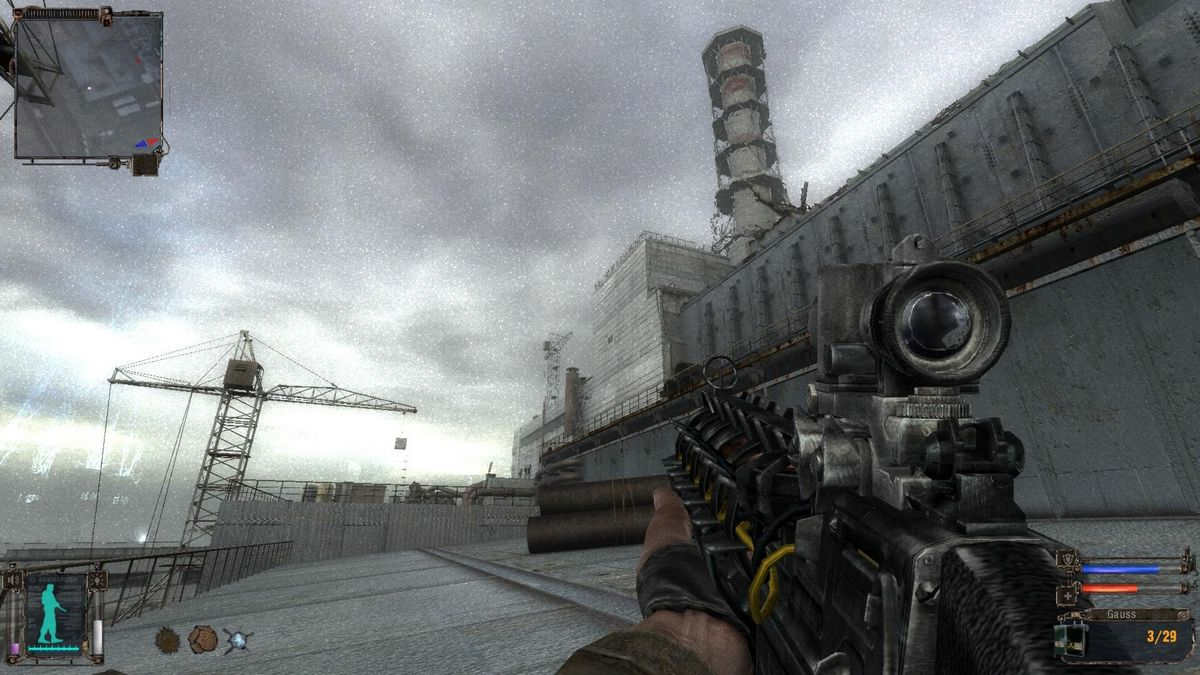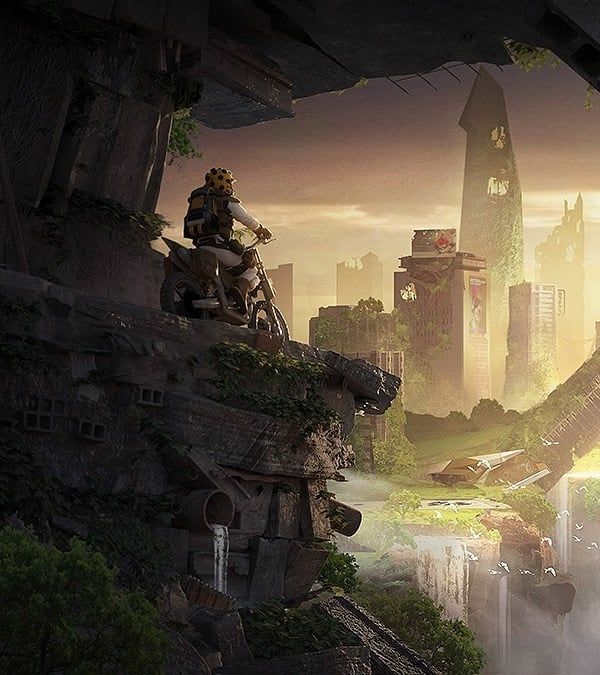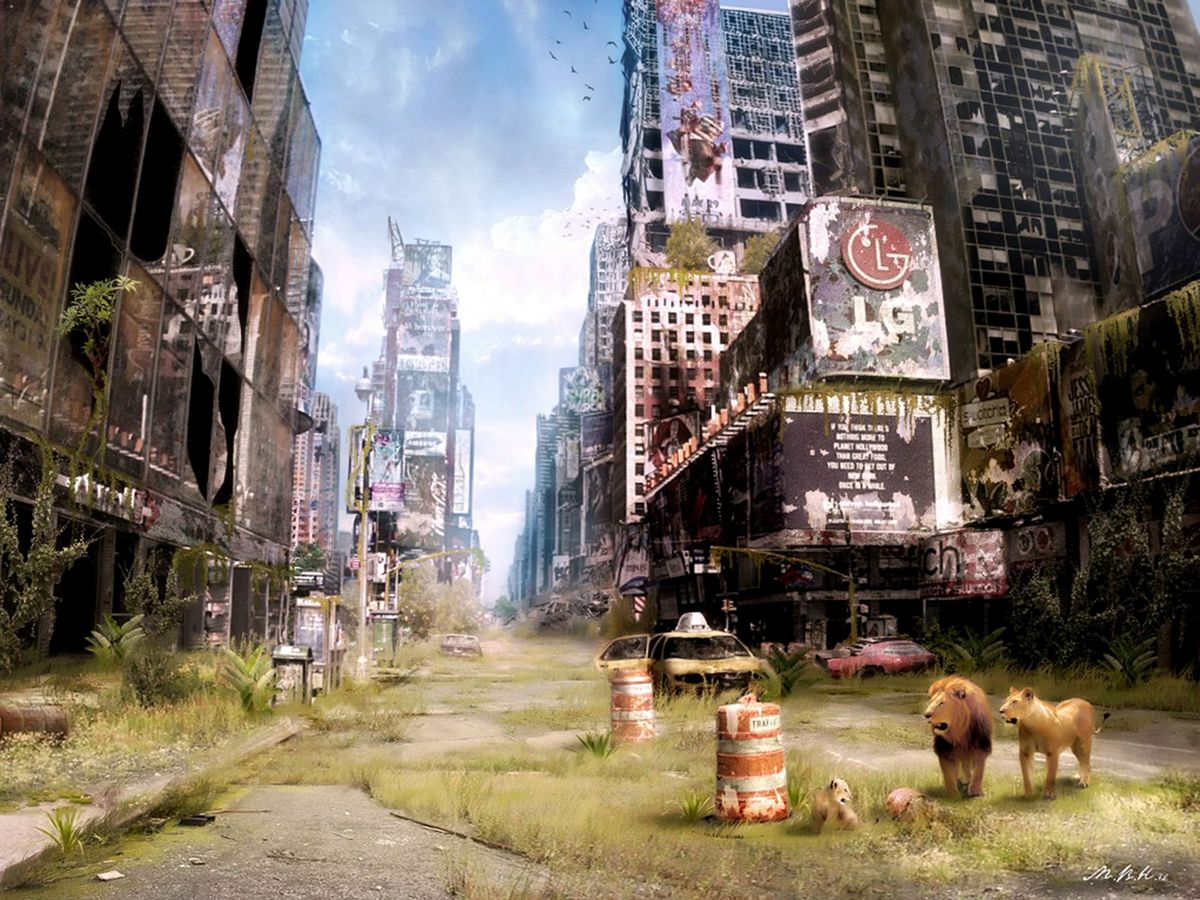
The gaming industry has seen a significant rise in popularity over the years, with numerous titles captivating gamers worldwide. One such title that has created a niche for itself is S.T.A.L.K.E.R.: Shadow of Chernobyl. Developed by Ukrainian game developer GSC Game World and released in 2007, this first-person shooter game takes place in an alternate reality where a second nuclear disaster occurs at the Chernobyl Nuclear Power Plant. The game’s unique storyline revolves around the protagonist known as “The Marked One,” who is on a mission to uncover the mysteries surrounding the Zone – an area affected by radiation following the nuclear incident.
S.T.A.L.K.E.R.: Shadow of Chernobyl offers players an immersive experience set within a detailed virtual world filled with danger and unpredictability. Players must navigate through hazardous environments while fighting off mutated creatures, hostile factions, and other dangers lurking within the shadows. With its realistic graphics and advanced AI system, S.T.A.L.K.E.R.: Shadow of Chernobyl provides gamers with one-of-a-kind gameplay that tests their survival skills against all odds.
In this article, we will dive deep into what makes S.T.A.L.K.E.R.: Shadow of Chernobyl so unique and examine its impact on both video gaming culture and pop culture as a whole. We’ll explore everything from its development history to how it stands out amongst other popular open-world games today. So put on your gas masks because we’re heading into The Zone!
- The Background and Inspiration for S.T.A.L.K.E.R.: Shadow of Chernobyl
- An Overview of the Gameplay Mechanics in S.T.A.L.K.E.R.: Shadow of Chernobyl
- The Role of Radiation in S.T.A.L.K.E.R.: Shadow of Chernobyl and its Impact on Game Design
- A Look at the Artistic Direction, Sound Design, and Music Composition in S.T.A.L.K.E.R.: Shadow of Chernobyl
- The Influence of Science Fiction Literature and Film on S.T.A.L.K.E.R.: Shadow of Chernobyl’s Narrative Structure
- Exploring the In-Game Factions and their Motivations within the World of S.TA.LK.E.R
- Weapons, Armor, and Equipment: A Breakdown Analysis for Optimal Strategy in Playing STALKER: Shadow Of Chernobyl
- Examining the Legacy and Longevity Factors that have Contributed to STALKER’s Cult Following
The Background and Inspiration for S.T.A.L.K.E.R.: Shadow of Chernobyl
T.A.L.K.E.R.: Shadow of Chernobyl is a post-apocalyptic first-person shooter game that was developed by Ukrainian video game developer GSC Game World and published in 2007. The game’s background and inspiration are rooted in the real-life Chernobyl disaster of 1986, which occurred when a nuclear reactor at the Chernobyl Nuclear Power Plant exploded and caused widespread contamination of the surrounding area.
The developers drew inspiration from various sources to create an immersive and realistic portrayal of life in the Zone – a fictionalized version of the real-life Exclusion Zone around Chernobyl. They visited abandoned towns, conducted interviews with former residents, consulted with military experts, and studied documents related to radiation effects on human beings. All this helped them create a believable gaming environment where players can explore radioactive wastelands filled with mutated creatures, hostile factions, anomalies (areas where physics operates differently), artifacts (objects created by anomalies), etc.
Overall, S.T.A.L.K.E.R.: Shadow of Chernobyl stands out as one of the most original games ever produced due to its unique mix of survival horror elements within an open-world FPS framework set against a backdrop based on true events. It has garnered critical acclaim for its atmosphere, story-telling techniques along with immersive gameplay mechanics that have made it stand out among other games in this genre.
An Overview of the Gameplay Mechanics in S.T.A.L.K.E.R.: Shadow of Chernobyl
T.A.L.K.E.R.: Shadow of Chernobyl is an action-packed first-person shooter game that takes place in a post-apocalyptic world. The game features an open-world environment, and the gameplay mechanics revolve around exploration, combat, and survival.
The game’s main objective is to survive in the Zone – a contaminated area surrounding the Chernobyl Nuclear Power Plant. Players must navigate through various anomalies, radiation pockets, mutants, and other dangers while searching for artifacts that can be sold for money or used to enhance their abilities.
Combat plays a significant role in S.T.A.L.K.E.R.: Shadow of Chernobyl. Players use a variety of weapons ranging from pistols to rifles to take down enemies such as bandits, mutants, and military personnel. The game also features several factions that players can join or work against depending on their playstyle.
Survival elements are also present in the gameplay mechanics of S.T.A.L.K.E.R.: Shadow of Chernobyl. Players must manage their hunger levels by finding food items scattered throughout the Zone or purchasing them from traders. They also need to monitor their radiation levels by using anti-radiation pills or wearing protective gear.
Overall, S.T.A.L.K.E.R.: Shadow of Chernobyl offers players an immersive experience with its detailed environments and complex gameplay mechanics. It’s a challenging but rewarding game that appeals to fans of first-person shooters and survival games alike.
The Role of Radiation in S.T.A.L.K.E.R.: Shadow of Chernobyl and its Impact on Game Design
T.A.L.K.E.R.: Shadow of Chernobyl, as it is the driving force behind the game‘s post-apocalyptic setting. The game takes place in the fictional Zone, an area surrounding the ruined Chernobyl Nuclear Power Plant where a second explosion occurred years after the real-life disaster. The radiation present in this environment affects gameplay mechanics and player decisions.
The impact of radiation on game design includes aspects such as character development, resource management, and environmental exploration. For example, characters must equip protective gear to prevent exposure to harmful levels of radiation that can lead to debuffs or even death. Resources such as food and medical supplies become scarce due to contamination concerns, leading players to make strategic choices on how they navigate through areas with higher levels of radiation.
Furthermore, exploring radioactive environments becomes increasingly dangerous as players progress further into contaminated regions within the Zone. This mechanic leads players towards more challenging encounters but also reinforces survival skills that are necessary for progression within the game world.
Overall, radiation is a pivotal component in S.T.A.L.K.E.R.: Shadow of Chernobyl’s design and enhances both its realism and immersion factors while providing an additional layer of complexity for players seeking more dynamic gameplay experiences.
A Look at the Artistic Direction, Sound Design, and Music Composition in S.T.A.L.K.E.R.: Shadow of Chernobyl
T.A.L.K.E.R.: Shadow of Chernobyl is an immersive first-person shooter game that takes players on a thrilling journey through the radioactive wastelands surrounding the infamous nuclear power plant. The success of this game can be attributed to many factors, including its exceptional artistic direction, sound design, and music composition.
The visual aesthetic of S.T.A.L.K.E.R. is characterized by its gritty realism and post-apocalyptic atmosphere. From the rusted metal structures to the decaying concrete walls, every element in this game has been meticulously crafted to create a sense of desolation and despair. Even the characters’ clothing and weapons are designed with practicality in mind, reflecting their survivalist nature.
Sound plays a crucial role in enhancing players’ immersion into S.T.A.L.K.E.R.’s world. Whether it’s hearing distant gunfire or footsteps approaching from behind, every sound effect has been carefully placed to heighten tension and add depth to gameplay. Additionally, dialogue between characters feels like genuine conversations rather than scripted lines thanks to top-notch voice acting.
Last but not least is the hauntingly beautiful musical score composed specifically for S.T.A.L.K.E.R.. Each track captures both the hopelessness of surviving amidst radiation as well as moments where hope seems possible. Ranging from deep bass notes during tense combat scenarios or soaring melodies when encountering something truly wondrous within Chernobyl’s exclusion zone reveals how much attention was paid towards creating an emotional response for players throughout Shadow Of Chernobyl experience .
In conclusion ,the combination of stunning visuals alongside realistic sound design and gripping music helps make STALKER: Shadow Of Chernobyl one of gaming’s most memorable experiences ever created making it a must-play title for fans who enjoy games that go beyond simple entertainment into powerful storytelling heights .

The Influence of Science Fiction Literature and Film on S.T.A.L.K.E.R.: Shadow of Chernobyl’s Narrative Structure
T.A.L.K.E.R.: Shadow of Chernobyl is heavily influenced by science fiction literature and film. The post-apocalyptic setting, mutated creatures, and advanced technology are all common tropes found in science fiction media. However, S.T.A.L.K.E.R. takes these elements a step further by incorporating themes such as the dangers of unchecked scientific advancement and the ethical implications of genetic experimentation.
The game’s story also draws inspiration from classic works of science fiction such as H.G Wells’ “The Time Machine” and Philip K. Dick’s “Do Androids Dream of Electric Sheep?” The inclusion of philosophical questions surrounding humanity, morality, and identity elevate the narrative beyond typical shooter games.
S.T.A.L.K.E.R.’s complex world-building is reminiscent of William Gibson’s cyberpunk novels or Ridley Scott’s “Blade Runner.” It juxtaposes modern-day technology with ruins from an earlier time period to create a unique atmosphere that feels both familiar yet alien.
Overall, it is clear that science fiction literature and film have had a profound impact on the storytelling within S.T.A.L.K.E.R.: Shadow of Chernobyl. These influences not only add depth to the game’s plot but make it stand out among other games in its genre.
Exploring the In-Game Factions and their Motivations within the World of S.TA.LK.E.R
T.A.L.K.E.R. is a complex and dangerous one, with factions vying for power, resources, and survival in the post-apocalyptic wasteland left behind after the Chernobyl disaster. Each faction has its own motivations and goals, shaped by their history and worldview.
The Ecologists are perhaps the most morally upright faction in the game, dedicated to preserving knowledge about the Zone and advancing scientific understanding of its anomalous properties. They believe that the key to humanity’s survival lies in understanding how to harness these anomalies for our benefit.
On the other end of the spectrum are the bandits, who have abandoned any pretense of morality or social order in favor of ruthless self-interest. They survive through raiding supply convoys or preying on weaker Stalkers who wander into their territory.
Somewhere in between lie factions like Duty and Freedom, each with their own competing visions for what life should look like within this new world order. Duty believes that strict enforcement of law and order is necessary to maintain stability; they see themselves as protectors of ordinary people against marauders and mutants alike. Freedom takes a more libertarian stance: they want individual freedom above all else, believing that everyone should be free to live as they please without interference from outside forces.

These various factions provide an intricate web of alliances and rivalries that drive much of Shadow Of Chernobyl’s narrative forward – players must navigate these shifting allegiances carefully if they hope to survive long enough to uncover all secrets hidden within The Zone itself.
Weapons, Armor, and Equipment: A Breakdown Analysis for Optimal Strategy in Playing STALKER: Shadow Of Chernobyl
Each item has its own unique characteristics that determine its effectiveness in combat situations. It is crucial to understand these attributes to create an optimal strategy.
Weapons play a critical role in STALKER as they are essential for fighting against mutants and other players. The game offers a plethora of firearms ranging from pistols to rocket launchers. Each weapon has its own firing rate, accuracy, range, and damage output which can be further improved by attaching scopes or suppressors.
Armor provides protection from enemy attacks and radiation exposure which is a significant challenge in Chernobyl’s exclusion zone. As primary defense against raiders’ bullets or mutant claws, it comes in different grades with varying degrees of durability and protective capability.
Equipment such as medkits can heal wounded characters while anti-radiation kits allow players to venture into dangerous areas without being exposed to radioactive isotopes that cause disease over time.
To maximize survivability chances within the game world of STALKER: Shadow of Chernobyl requires careful consideration when selecting weapons based on what kind of encounters are expected ahead along with choosing suitable armor sets for each situation based on mobility requirements versus defensive needs; all supported by adequate supplies such as ammo types necessary for peak performance during firefights alongside well-stocked medical & utility kit inventories ensuring maximum preparedness for any eventuality encountered within this dark post-apocalyptic setting full of danger around every corner.
Examining the Legacy and Longevity Factors that have Contributed to STALKER’s Cult Following
T.A.L.K.E.R.: Shadow of Chernobyl is a first-person shooter action game that was released in 2007. Despite being over a decade old, the game has managed to retain its cult following even today. This can be attributed to various factors such as its unique gameplay mechanics, immersive storyline, and atmospheric visuals.
One of the biggest reasons for STALKER’s cult following is its legacy. The game was set in the aftermath of the real-life Chernobyl disaster which happened in 1986. It portrayed a post-apocalyptic world that was both realistic and terrifying at the same time. The attention to detail given by developers made it possible for players to experience what it would be like living in an environment filled with radiation and dangerous creatures.
Another factor that contributed to STALKER’s longevity is its open-world design combined with RPG-like elements. The player had complete freedom on how they wanted to explore and interact with factions within the game world while having control over their character’s development through leveling up abilities with different choices throughout the story line.
Furthermore, STALKER also had a modding community which allowed players to create new content or modify existing features of the game itself providing unlimited replay value.
In conclusion, S.T.A.L.K.E.R.: Shadow of Chernobyl has retained its devoted fanbase due to several factors such as rich storytelling mechanics combined with gritty realism of nuclear fallout sites around Ukraine – all underpinned by an engaging open-world sandbox approach allowing freedom from start till finish while constantly offering something new for fans looking for more from this title years after release day concluded making it one-of-a-kind gaming experience unmatched by few others out there today!
In conclusion, S.T.A.L.K.E.R.: Shadow of Chernobyl is a masterpiece in the world of post-apocalyptic games. Its immersive and atmospheric gameplay coupled with its stunning visuals and engaging narrative make it one of the most unique gaming experiences out there.
The game’s simulationist approach to mechanics allows players to fully immerse themselves in the world by having them manage everything from hunger and radiation poisoning to weapon degradation. This level of detail adds a layer of complexity that few other games offer.

Furthermore, S.T.A.L.K.E.R.’s open-world design gives players complete freedom over their playstyle as they explore The Zone at their leisure. Whether players choose to take on missions for factions or forge their own path through this hazardous environment, there are countless hours of gameplay waiting for them.
Overall, S.T.A.L.K.E.R.: Shadow of Chernobyl is an absolute must-play title for fans of post-apocalyptic games looking for something truly different. With its gripping story, unforgiving gameplay mechanics, and endless exploration opportunities, this game sets a high bar that very few titles have managed to match even years after its release.
Read More:- Unleash Your Inner Warrior with Shadow Hearts: Covenant – The Ultimate Guide to Conquer!.
- Experience Epic Battles and Stunning Scenery in Shadow of the Colossus Game – A Masterpiece!.
- Unleash Your Inner Gamer with Shadow Hearts: A Dark Fantasy RPG Adventure (67 characters).
- Unleash Your Powers in Shadow Hearts: From the New World – A Thrilling Game Adventure!.
- Master the Post-Apocalyptic Wasteland in Kenshi: A Complete Guide for Gamers!.
- Experience Immersive Post-Apocalyptic World with Metro Exodus: Enhanced Edition – A Game Changer!.
- Unleash Adventure with Broken Sword: Shadow of the Templars – The Director's Cut.